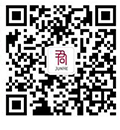Shanghai Gold Exchange International Board Officially Launched
2014.10.15 XIE, Qing (Natasha)、Wang Qiongyue
On September 18, 2014, the Shanghai Gold Exchange (the “SGE”) officially launched the long-expected International Board (the “International Board”) in the Shanghai Free Trade Zone (the “FTZ”). It is the first time that international investors are allowed direct access to China’s gold exchange. So far, more than 40 institutions have signed up as the first batch of international members of the SGE, and eight domestic banks have been approved to provide clearing services for gold trading on the International Board.
Along with the launch of the International Board, SGE revised the Articles of Association of the Shanghai Gold Exchange (the “Articles of Association”), the Spot Trading Rules of the Shanghai Gold Exchange, and other rules to reflect the incorporation of the International Board. Also it formulated the Measures for the Administration of the Business Activities of the Shanghai International Gold Exchange Co., Ltd., the Implementing Rules for International Member Management of the Shanghai Gold Exchange and other relevant detailed rules to specifically regulate the activities of the International Board. We have summarized the key aspects of such documents.
I. Operational Framework of the International Board
To operate the International Board, the SGE authorized its wholly-owned subsidiary, Shanghai International Gold Exchange Co., Ltd. (“SGEI”), to provide trading access, clearing, risk management and other services to international members.
For the purpose of trading on the SGE, international members must connect their trading systems to the SGE’s system via the access provided by SGEI. In respect of any order placed by an international member, before the order is transmitted to the SGE, SGEI shall review and verify, inter alia, the adequacy of such international member’s funds, bullion inventory and positions as well as whether the order complies with the applicable requirements of the SGE. SGEI shall process all valid orders according to the principle of time priority, and the final orders filled by the international members shall be governed by the clearing results provided by SGEI.
II. International Member Management
i. Definition and Categories
The term “international member” refers to members that are (1) duly registered either outside the territory of the PRC (including those registered in Hong Kong, Macau or Taiwan) or within a region otherwise recognized by the SGE and (2) approved by the SGE to trade precious metals on the SGE. International members are categorized as full members (Type A Members) and proprietary trading members (Type B Members), pursuant to their authorized business scope. Type A Members can carry out both proprietary trading and the brokerage business, while Type B Members can only carry out proprietary trading. Clients whose brokers are international members are referred to as “international clients”.
ii. Conditions for International Membership
To become an international member of the SGE, in addition to the conditions provided in the Articles of Association, an applicant: (1) shall possess net assets of not less than 10 million USD (or an equivalent in RMB or other foreign currency) and (2) shall possess (or its parent company or headquarters shall possess) a strong industry position. Such qualifications allow the SGE to exercise broad discretion in approving international applicants for membership. After being accepted as an international member, the applicant will receive a certificate issued by the SGE. The SGE will also report such admission to the People’s Bank of China (the “PBOC”) for recording and will issue a public announcement accordingly.
An international member shall be granted one floor trading seat together with its membership. It can apply for up to two additional floor trading seats, as its business requires.
iii. Rights and obligations
An international member enjoys the rights of special members provided in the Articles of Association and must undertake corresponding obligations. Moreover, an international member is subject to a minimum trading volume requirement of 10 metric tons per year for Type A Members and 5 metric tons for Type B Members. In terms of disclosure, an international member shall timely submit written reports on certain designated issues, as required, in addition to filing annual reports with the SGE.
III. Clearing and Settlement
SGEI manages the funds of international members and their clients on a segregated basis, strictly limiting the use of the funds for trading in the SGE. SGEI follows the rule of “clearing on T+0 and settling on T+1”, which means that SGEI will finish clearing through rebalancing the relevant accounts of the parties to the trade upon delivery or clearing, and remit the funds to the member’s specified account at the request of the member on T+1.
i. Rules for Clearing
All the trades on the International Board shall be centrally cleared by SGEI, following the principles of “netting, segregation and multi-tiered” for cleared funds. “Netting” means that SGEI offsets an international member’s open trades executed on or through the SGE and then remits funds representing the member’s net obligation. “Segregation” means an arrangement whereby the funds of international members and international clients are accounted for and held in segregated accounts, and all of the funds of the international clients are deposited in the special settlement account of SGEI, which will be administered within a “closed-loop”. “Multi-tiered” approach means that SGEI shall clear for international members, while international members in turn shall clear for their clients.
For physical trading, SGEI applies a delivery-versus-payment system. For trading in deferred products, SGEI applies daily mark-to-market and trading margin requirements.
ii. Rules for Settlement
Each international member shall open a proprietary trading account, a brokerage account (applicable to Type A Members), and a Nostro Account at one of the appointed settlement banks for currency settlement. In brokerage trades, the fund transfer between the settlement account of SGEI, the brokerage account of the international member and the account of the client are enforced in a directional manner within a “closed-loop” to ensure the security of funds. For any cross-border currency settlement services provided by SGEI, the rules applicable to FTZ accounts promulgated by the PBOC shall also apply.
IV. Delivery
The SGE may establish International Board certified vaults to provide physical delivery and physical storage of bullion as well as related import and export customs declarations for international members, clients of international members and import commercial banks for international members and international clients, and will assume full responsibility for the storage of bullion under its custody. Such vaults are subject to the regulations of the customs authority.
The International Board’s certified vaults can be divided into two categories, namely transaction vaults, which facilitate management services in respect of the bullion involved in the transactions entered into through the SGE, and safe deposit vaults, which facilitate management services for other bullion. To deposit bullion into a transaction vault, an international member or an international client shall first acquire accreditation from the SGE, which requires that the international member be:
(1)an accredited supplier of The London Bullion Market Association (the “LBMA”);
(2)a bank, fund management firm or other type of financial institution, whose physical bullion is produced by an LBMA accredited refiner;
(3)an SGE standard gold ingots and bars refiner; or
(4)an institution accredited by the SGE.
An international member can avail itself of a range of services provided by the SGE, without the prerequisite of accreditation, including registration and custody, physical clearing, quality certification, logistics and distribution, and transfer of possession of pledged or leased bullion, while an international client may access such services only through international members.
It is noteworthy that international members or international clients may only load-in or load-out products traded on the International Board by default, but shall acquire special permission from the SGE to load-in and load-out products traded on the main board of the SGE.
V .Risk Control
SGEI shall implement risk-control measures under standards identical to those of the SGE. Whenever clearing reduces the balance of the clearing deposit of an international member below the applicable minimum threshold, SGEI shall promptly issue a margin call to the international member, which shall reinstate the clearing deposit to the minimum threshold prior to the subsequent market opening. SGEI may restrict the international member from opening a position in any deferred products and purchasing physical products, if the balance of its clearing deposit is lower than the minimum threshold, but above zero. SGEI may enforce the liquidation of the international member’s positions, if the balance of its clearing deposit is negative.
International members and international clients are required to report large positions when the applicable threshold is triggered. SGEI also enforces risk-warning systems according to the requirements of the SGE, and is authorized to take administrative measures in the event of any detected abnormality.
The above is a preliminary overview of the major aspects of the International Board of Shanghai Gold Exchange. We will closely follow the development of the regulations of the International Board as it moves forward.












